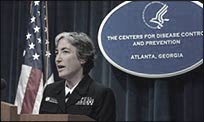CERC Manual
CDC’s Crisis and Emergency Risk Communication (CERC) manual is based on psychological and communication sciences, studies in issues management, and practical lessons learned from emergency responses. The CERC manual is intended for public health response officials and communicators who have a basic knowledge of public health communication, working with the media and social media, and local and national response structures.
Last updated 2018
– Types of emergencies and factors that increase the risk of crisis
– Definitions of crisis and emergency risk communication (CERC) concepts
– Lifecycle of CERC and how communication works at each phase of a crisis
Last updated 2019
– The four ways people process information during a crisis
– Mental states during a disaster, such as uncertainty, helplessness, and hopelessness
– Risk perception and behaviors
Last updated 2018
– Understanding your audiences
– Making facts work in your message
– Building credibility and trust
– Gathering audience feedback
Last updated 2018
– Communities in the context of an emergency
– Types of community relationships
– Community engagement in each phase of a crisis
– Levels of community engagement
– Tips for community engagement
Last updated 2014
– Phases of a crisis
– Developing the plan
– Applying the plan throughout CERC lifecycle
Last updated 2014
– The role of the spokesperson in crisis communication
– Characteristics and best practices of a spokesperson
– Working with the media and public meetings
Last updated 2014
– The media’s role in a crisis, disaster, or emergency
– Interacting with the media and developing positive relationships
– Meeting media needs throughout an emergency
– Responding to media regarding significant errors, myths, and misperceptions
Digital & Social Media
Health Equity Guiding Principles for Inclusive Communication
Develop & Test Materials, guidance and resources for message testing, plain language, visual communication, and more
The 2014 CERC manual is no longer available in hard copy. You can download a PDF of the 2014 CERC Manual [PDF – 11 MB].






